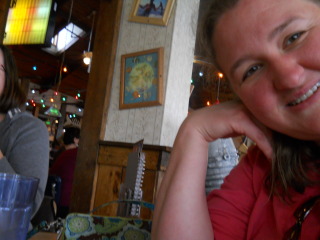There are lots of ways to save a little here and there on grocery money. One of the best, in my opinion, is cooking dried beans instead of buying canned. Canned beans tend to have a lot of salt and also typically have BPA in the lining of the cans, which is something I'm starting to avoid when I can. I keep a few cans of beans on hand for nights when I need something REALLY quick (and canned chili beans to feed my child's addiction - she loves them straight out of the can), but I also try to keep a good selection on hand in the freezer.
At the moment, I have a batch of black beans simmering on the stove. The house smells great because I add a few extra ingredients to the pot to give the beans a little extra kick of flavor (more about that in a minute).
Beans are so easy to prepare. They take quite a bit of time, but it's almost entirely cooking and soaking time, with very little hands-on needed. You can cook any amount, as long as you have a pot big enough to handle it. I usually buy in bulk, so I tend to cook two cups of dried beans at a time.
First, put your beans in a dish (I use a pie plate) and pick through to remove any small rocks or bad beans. I remember watching a Food Network show where the host was picking through a dish of beans and found three rocks in it. I found it odd, because I have NEVER found a rock in my beans. But I always check, just in case. Rinse the beans in a sieve and put them in a pot (I use a two-quart stock pot). Now, you have two options:
Option one: Add cold water to cover with at least two inches of water over the top of the beans. Set aside and soak overnight.
Option two: Add water to cover with at least two inches of water over the top of the beans. Put on your stove and bring just to a boil. Turn off (do not drain) and let the beans sit for two hours.
At the end of the soaking time, drain and rinse your beans. Put back in the pot, add water again to cover by two inches. Bring to a boil, then turn down and simmer. I find that if I cook the beans too hard, the skins fall off, so keep it at as low a simmer as possible.
If you want to add a little flavor oomph to your beans, add a bay leaf, a few cloves of sliced garlic, and a couple of onion slices to the cooking water. If you have a specific recipe in mind, you can also add the same seasonings called for in your recipe to help bring an extra layer of flavor to your dish. Be careful, however, not to add any salt or seasoning including salt, or your beans may not soften. Always salt at the end, when your beans are fully cooked.
After 90 minutes, start checking your beans to see if they're done. I usually taste one or two, and then add five or 10 minutes to the cooking time before I check again. Keep going until your beans are fully cooked. Be careful not to overcook them, though, or they'll just get mushy. Drain, saving the liquid if you're going to freeze them, remove any large pieces of seasoning (such as the bay leaf and onion slices - I usually leave the garlic), and let cool.
If you aren't using the beans right away, they freeze beautifully. I usually freeze them in two-cup portions, which works for me for most recipes. Just put the cooled beans in a freezer-safe container, add cooking liquid just to cover (this will help keep the beans from drying out in the freezer), and pop them in your freezer.
Enjoy your beans!
Subscribe to:
Post Comments (Atom)


No comments:
Post a Comment